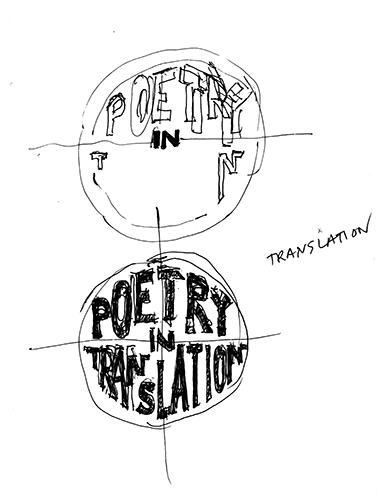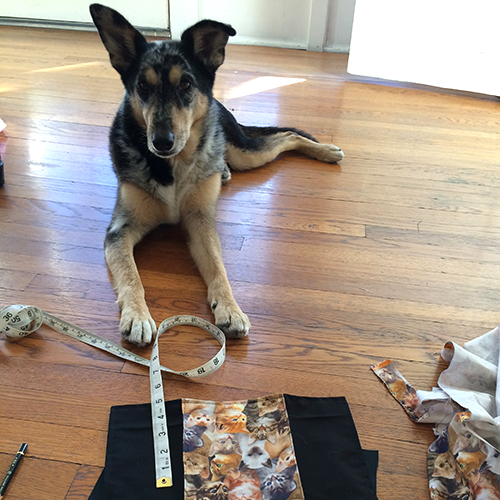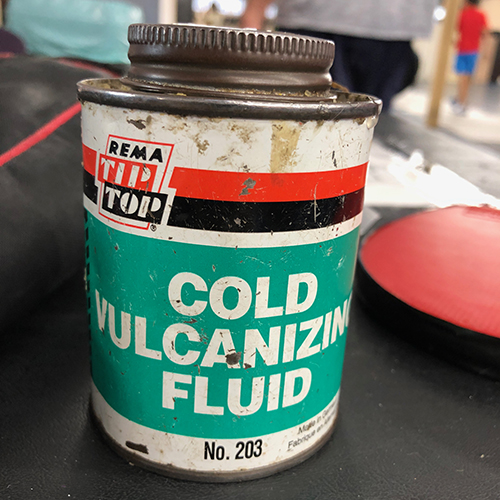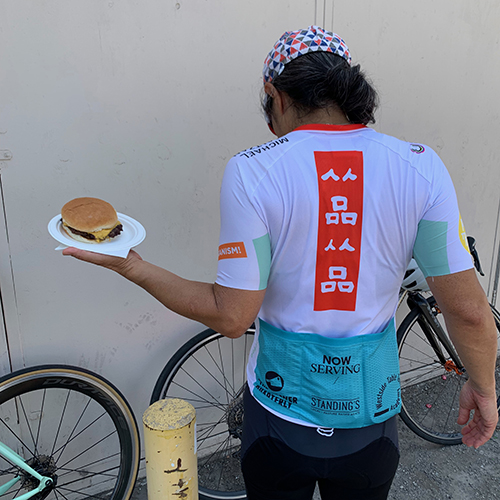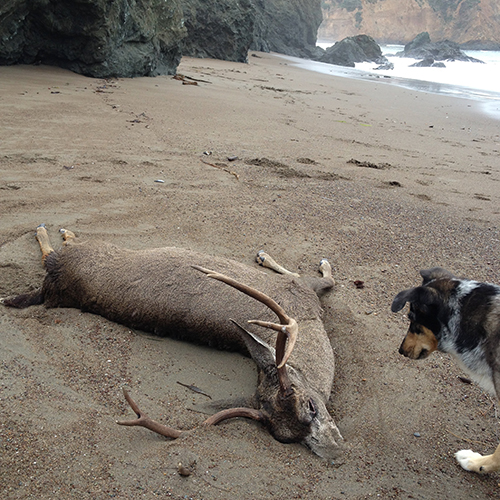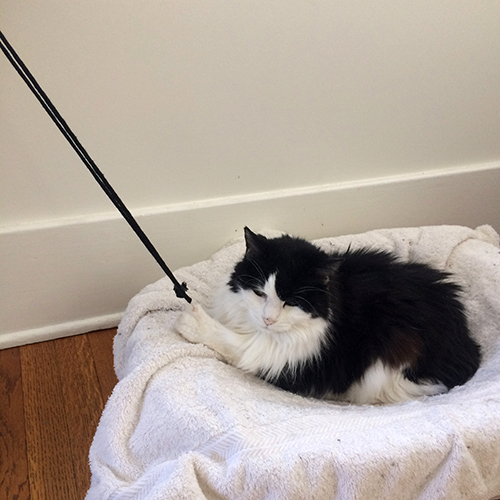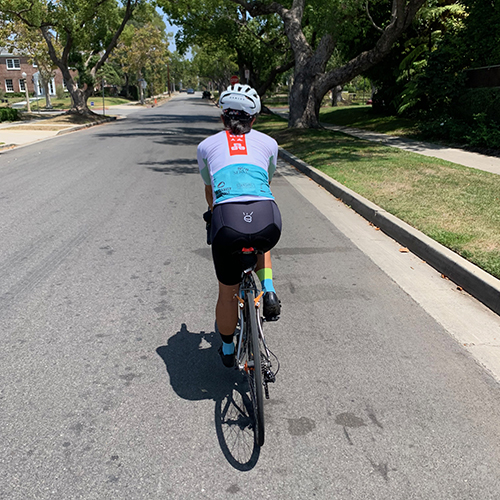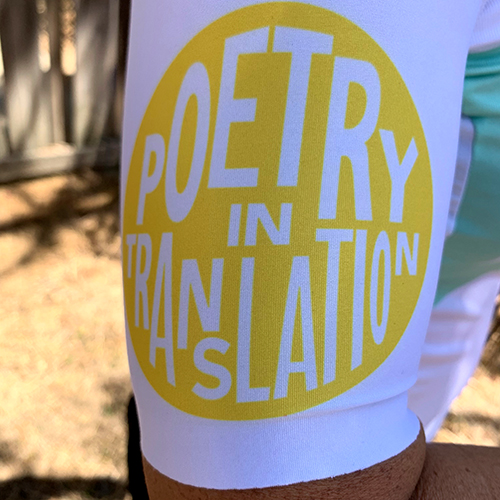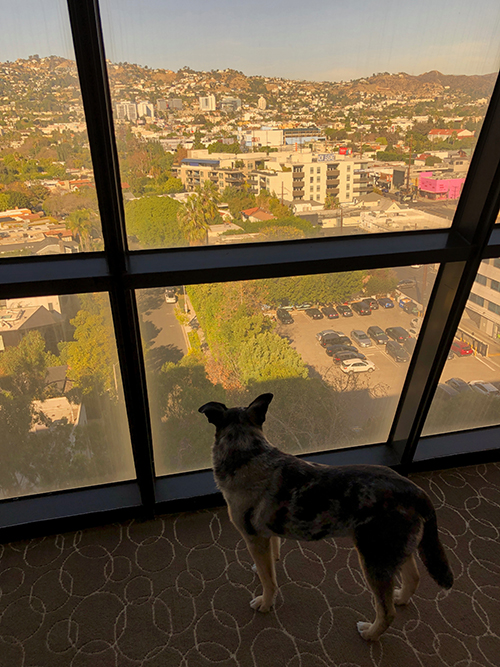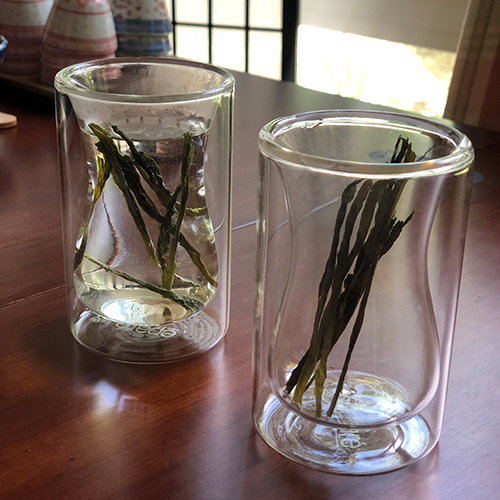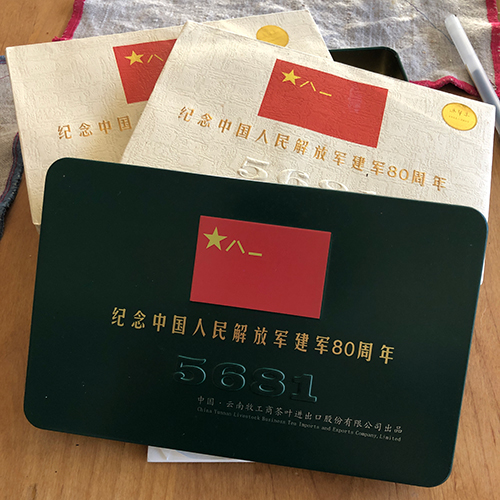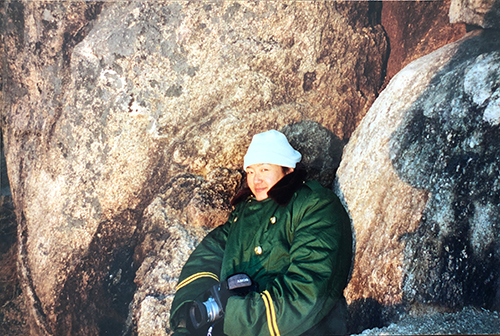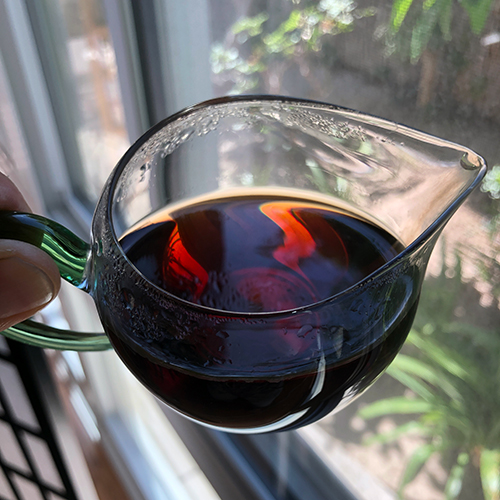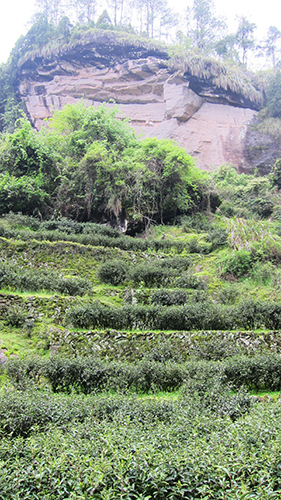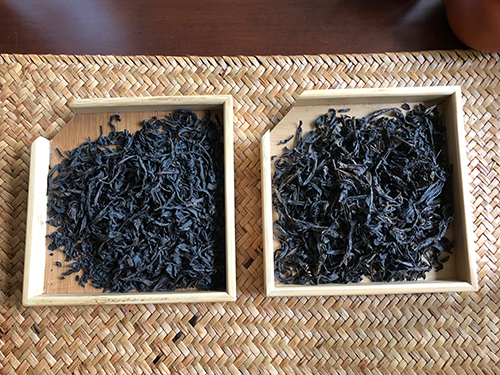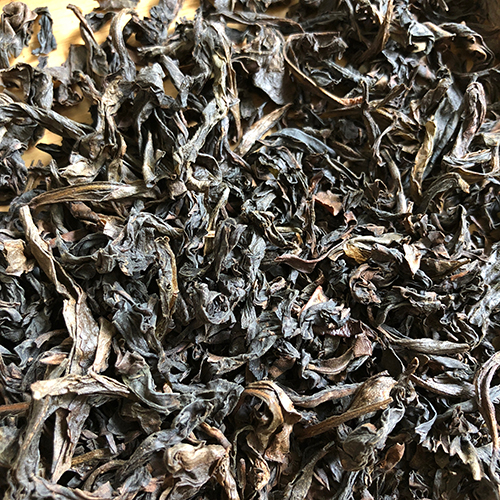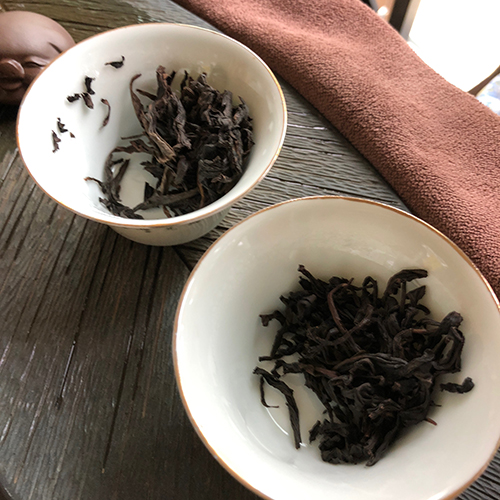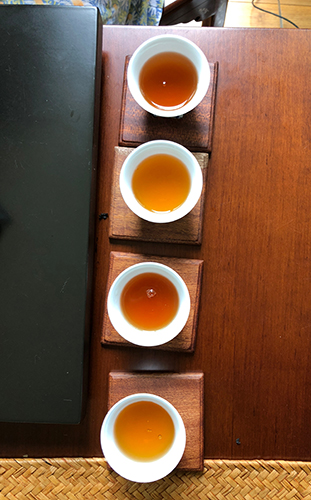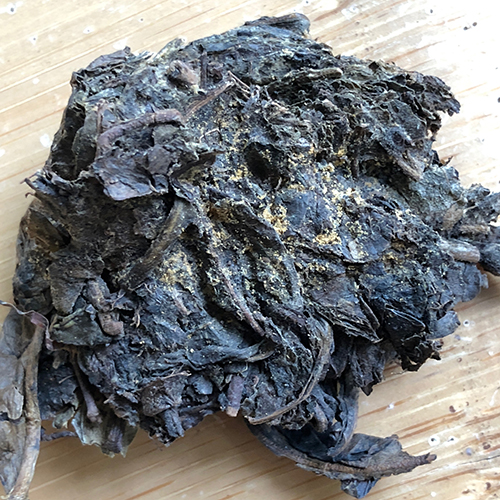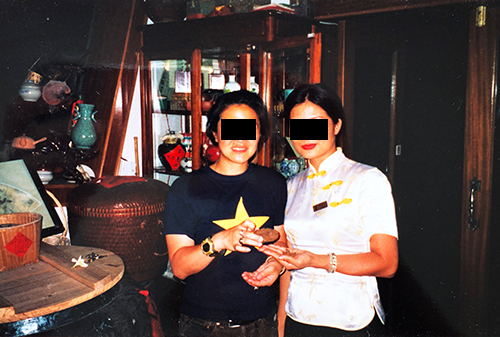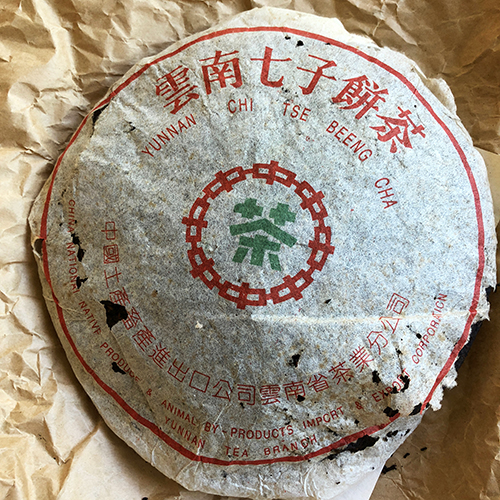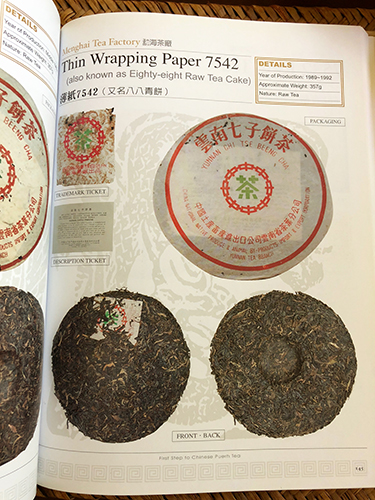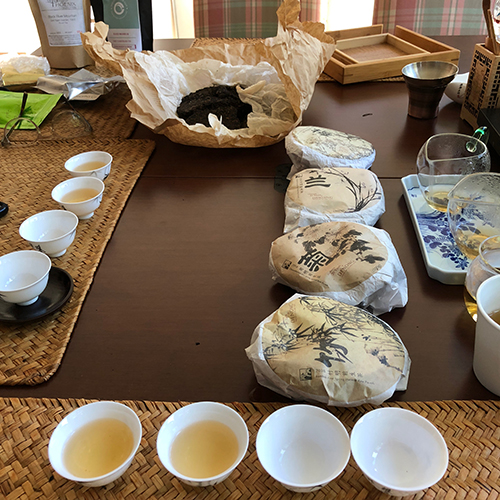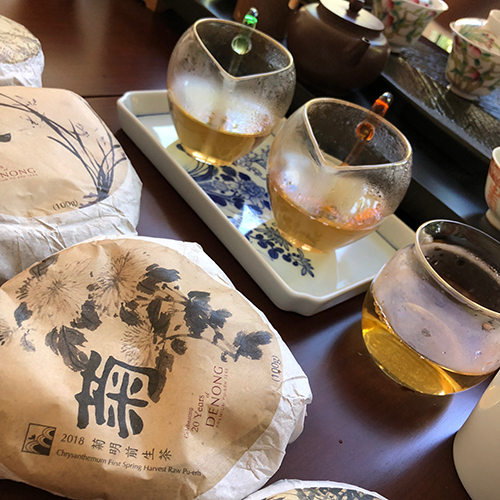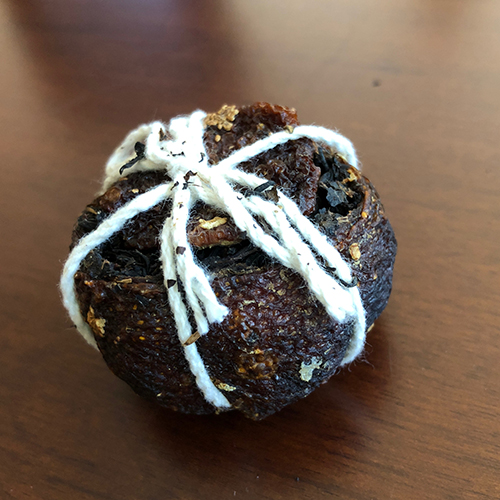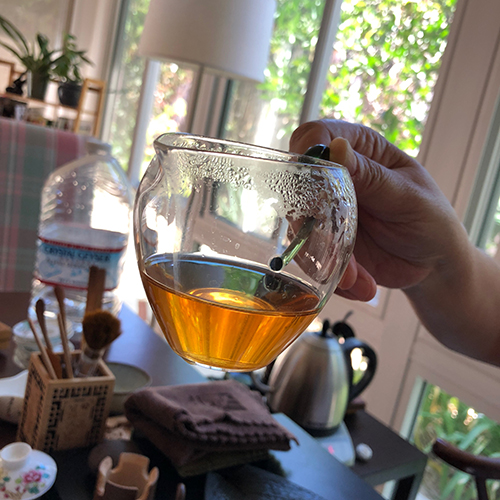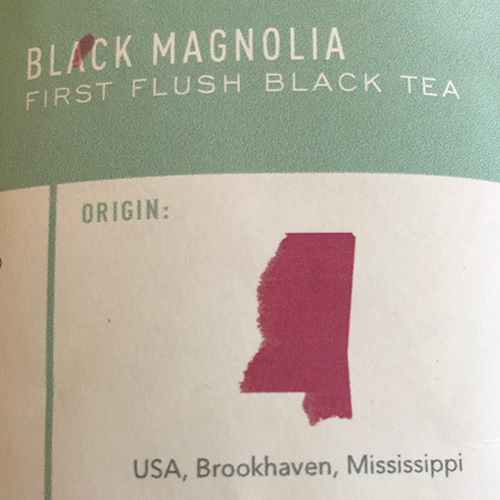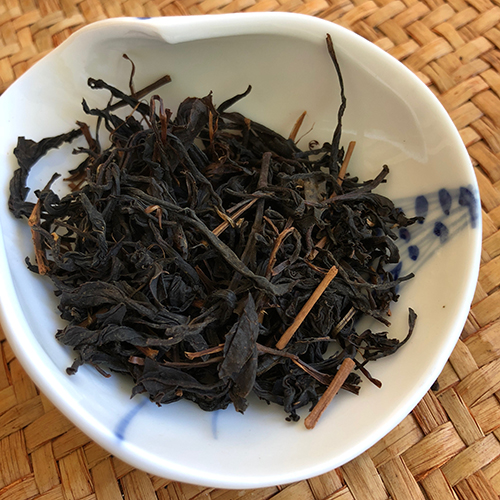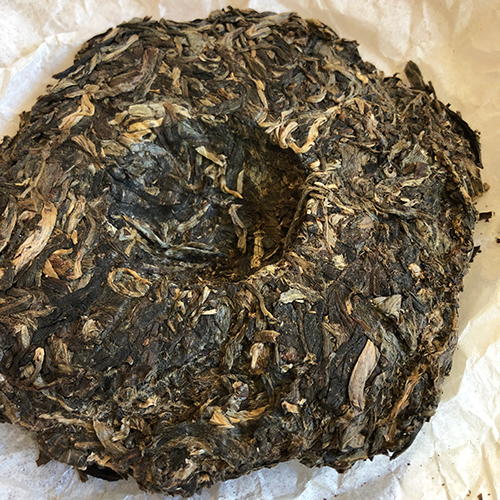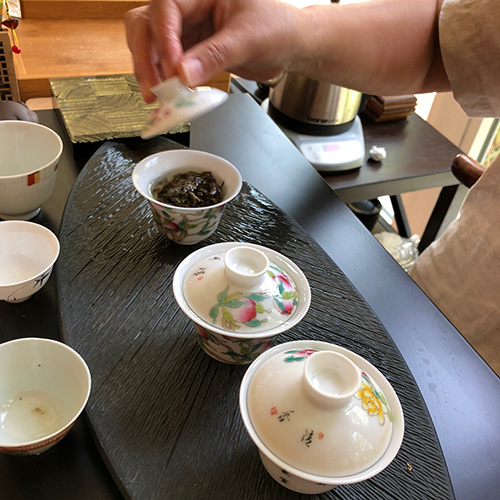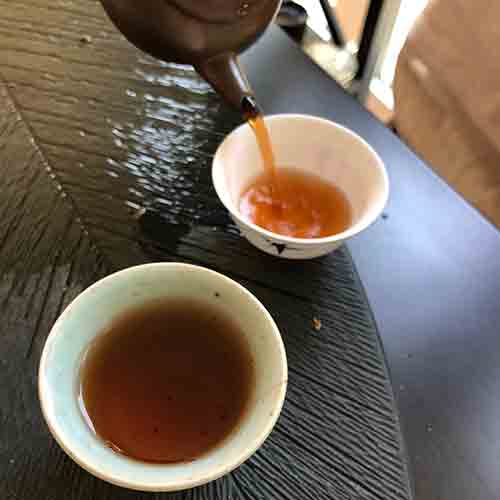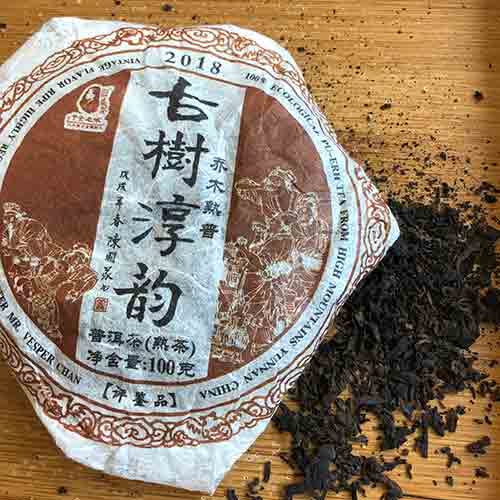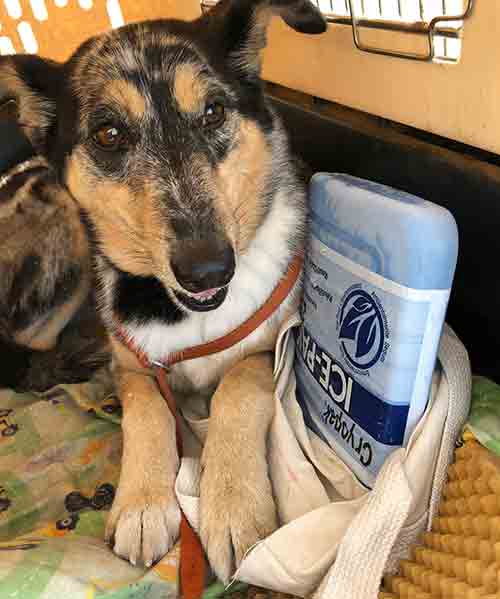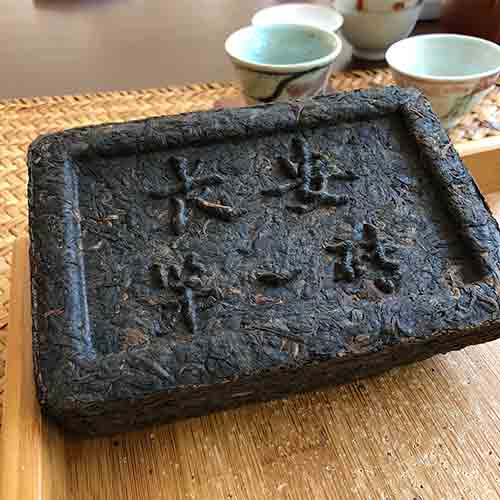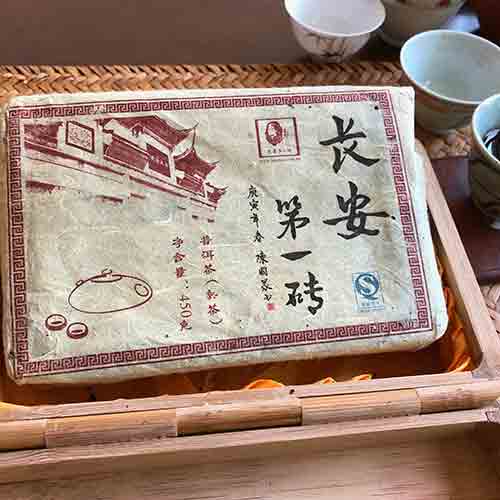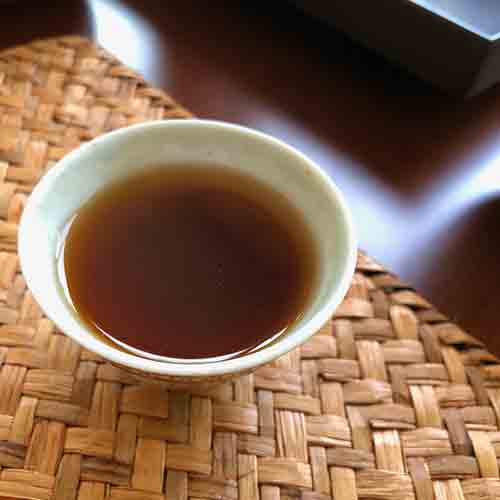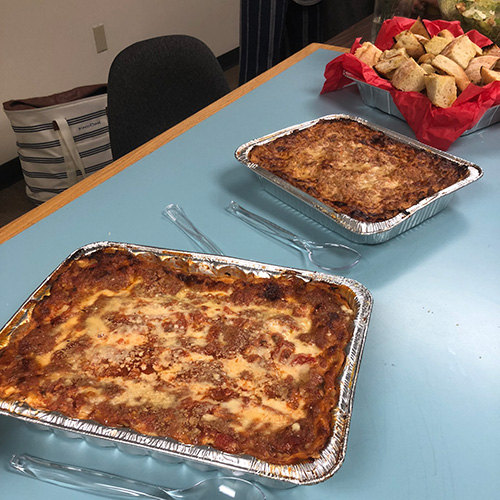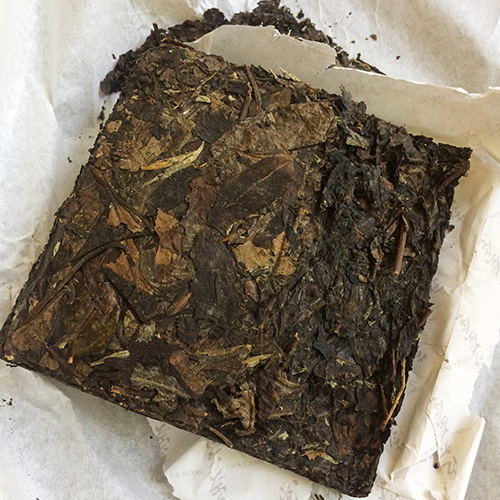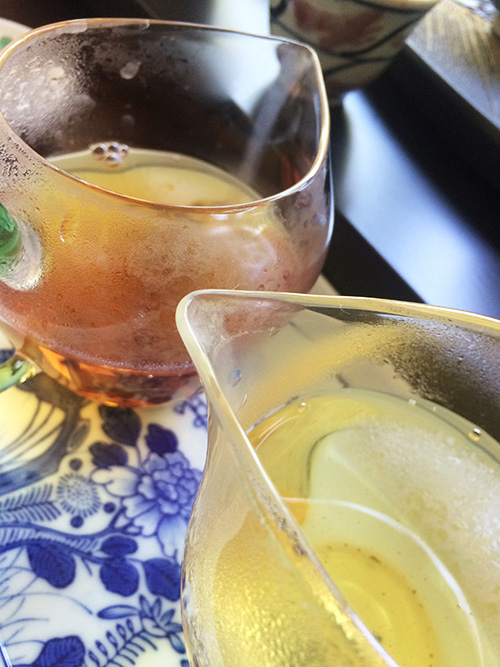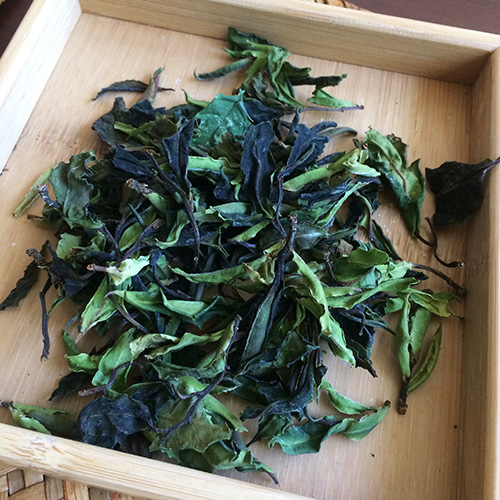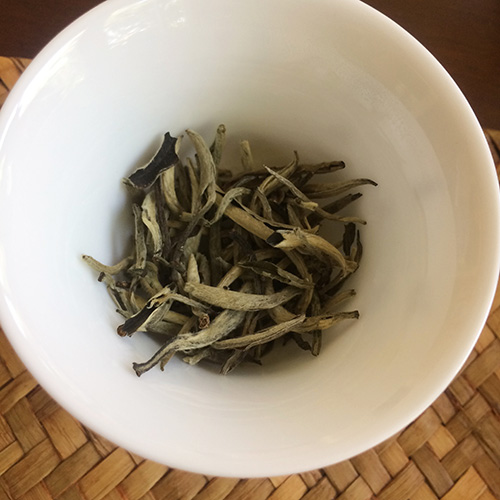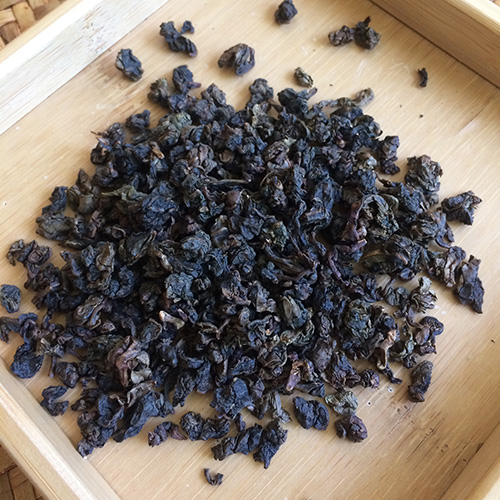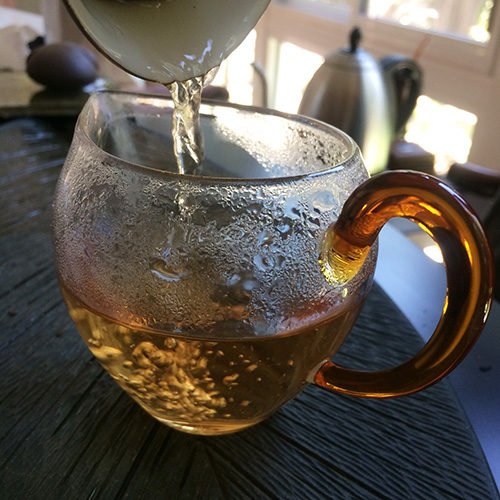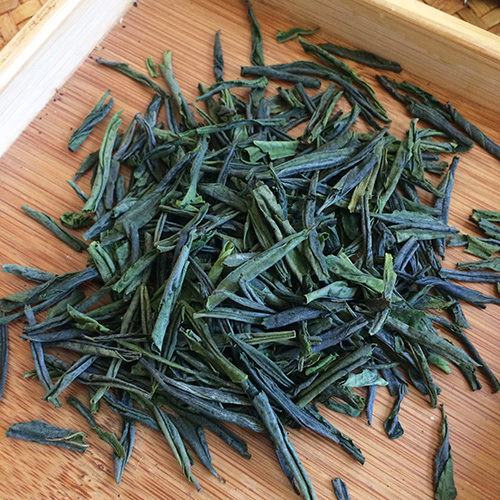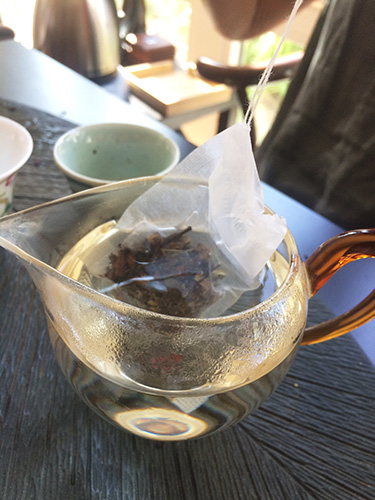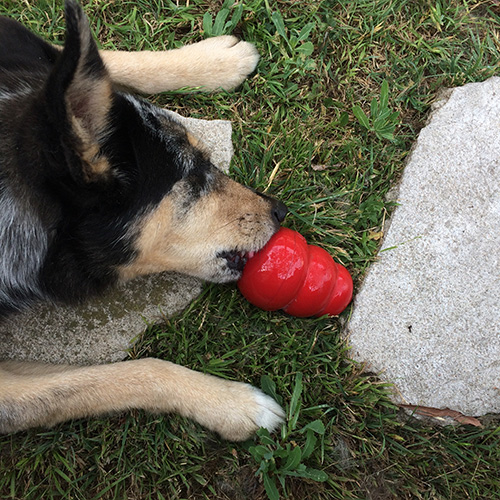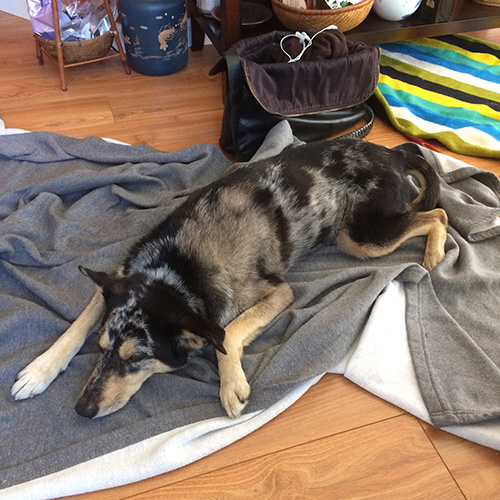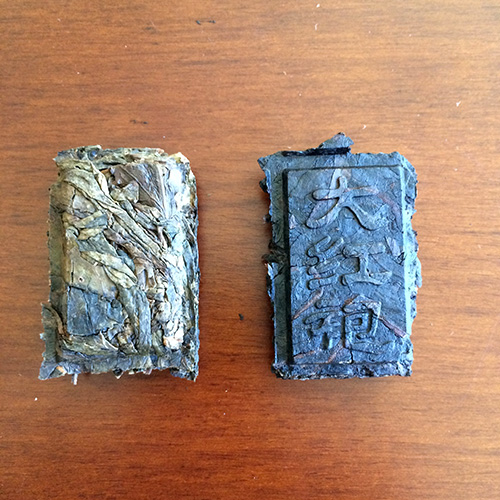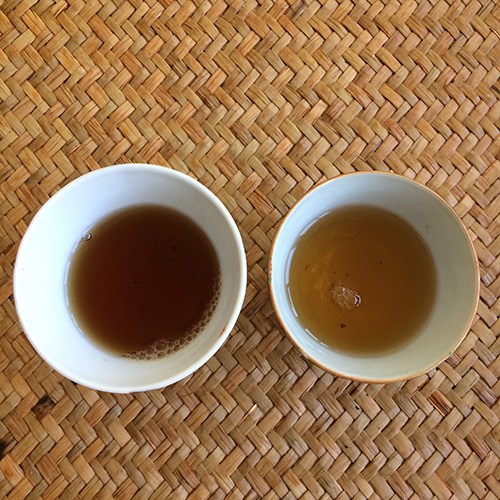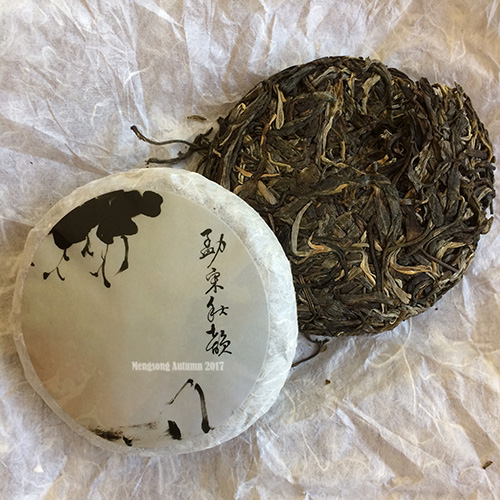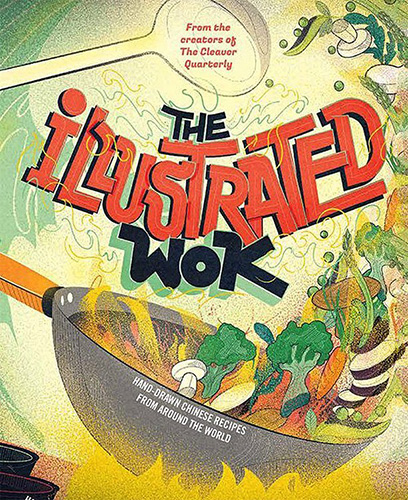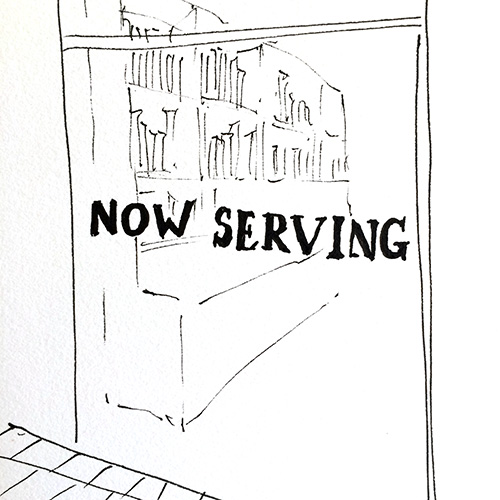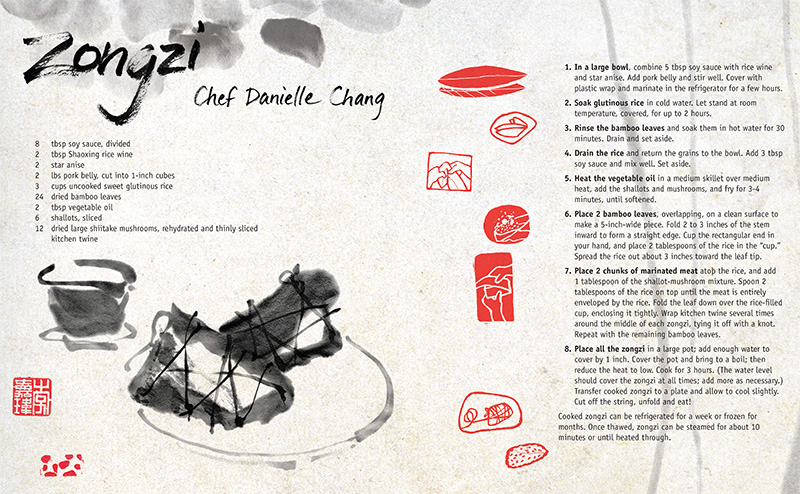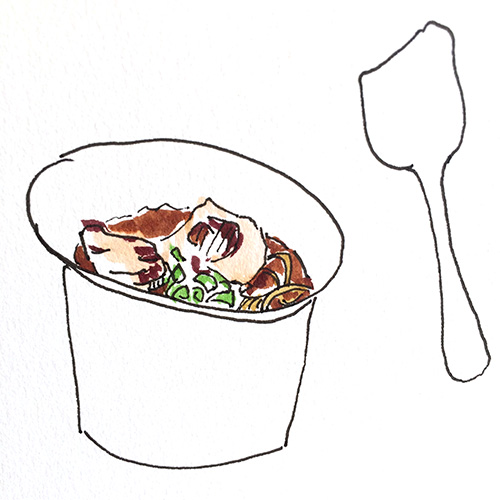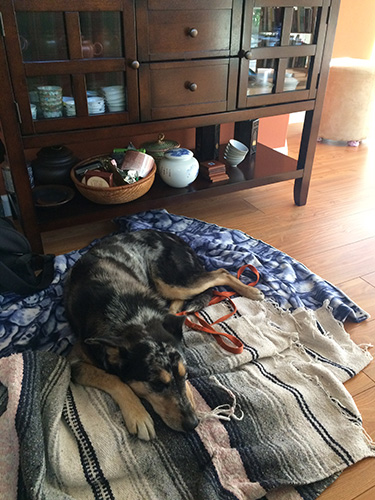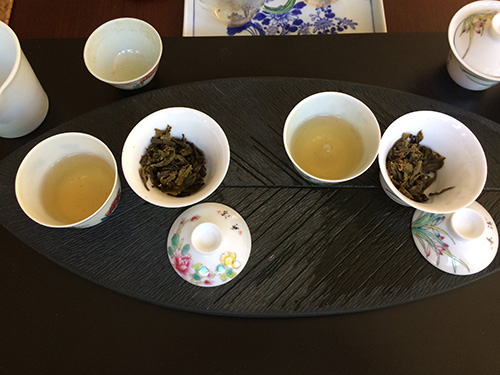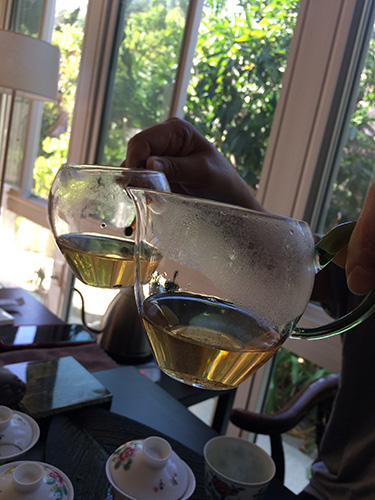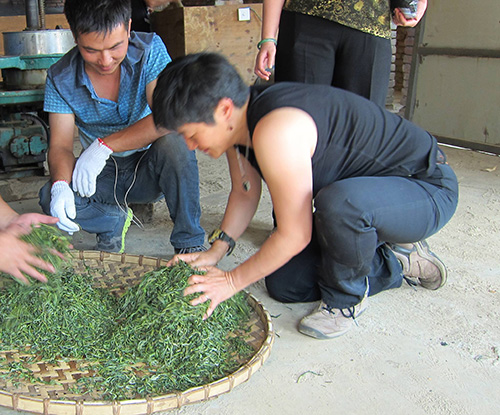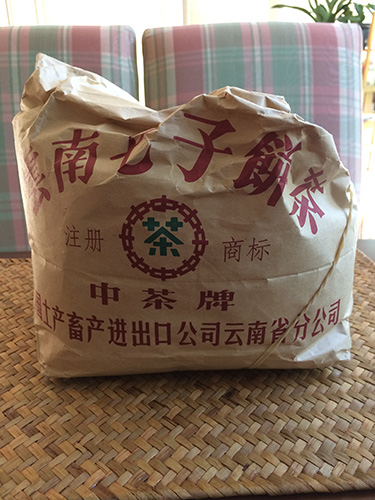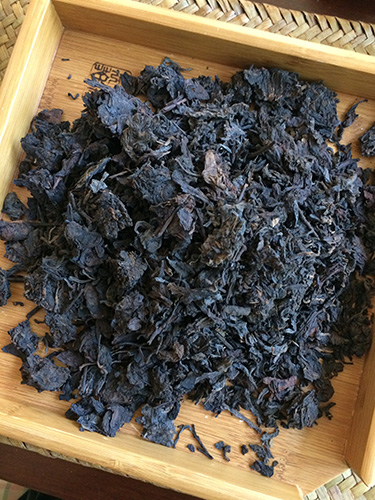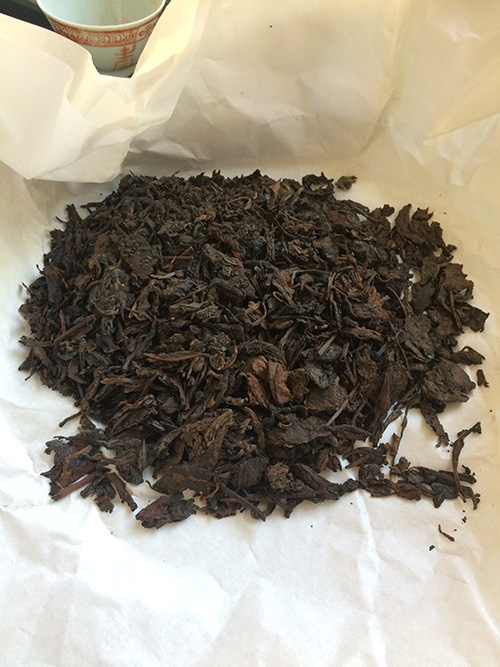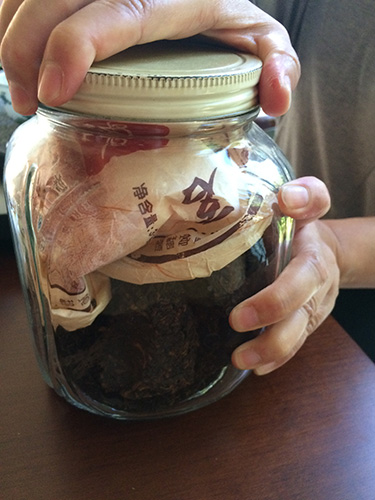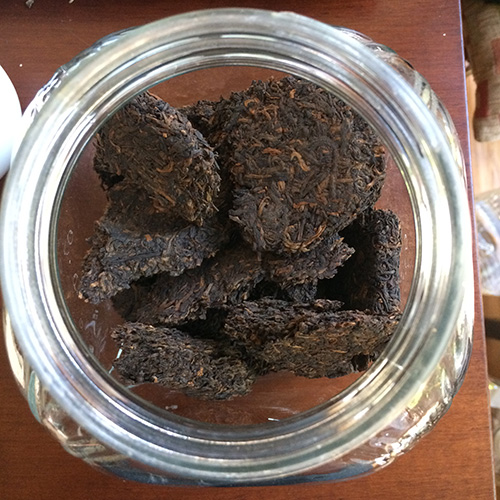What happens when you schedule a tea tasting on the day the temperature climbs to 117? You start out with a plan, two wild raw pu’ers and some dim sum take out, and end up meandering into GABA oolong, charcoal roasted Tieguanyin, and green tea from Santa Barbara.
Dim sum dishes usually come in threes, so tea tasting in threes (Linda and I were joined by our friend J.D.) is perfect, as it ensures no one feels bad for eating that extra egg tart.

First on our list was two wild teas from Hojo. If you don’t know Hojo, be prepared for incredible teas laced with intense agricultural knowledge. We tasted his 2018 wild raw pu’er from Da Xue Shan, which smells fruity and sweet, and looks nothing like a traditional puck of pu’er.

Hojo thinks the flavor of wild tea tends to be milder because it’s grown in a lot of shade. To bump up the flavor he lets these leaves wither overnight before pan-frying, which oxidizes the tea slightly, and produces awesome color variations.
His definition of “wild” tea is pretty severe, if there are trees growing near paths where cattle may pass by and take a poop, they don’t count as wild, due to the fertilization, which he says will diminish the long-lasting aftertaste of real wild tea. He doesn’t say whether the same applies to wild animals cruising by, but this tea tastes green and fresh, has absolutely no bitterness, with a sugary aftertaste that’s lasting as long as this heat wave.
We drank it with a 2005 wild pu’er (exact origin and animal poop percentage of fertilization unknown, it somehow ended up in our hands) that tasted smooth and brown, full of burnt caramel and marshmallow.


Next we tried Hojo’s wild white tea from Da Xue Shan, made from the same leaves as the pu’er. And yes, it’s really this vivid in person.

This tea was withered for several days but instead of piling the leaves on top of each other like many Fujian white tea producers, Hojo gives his white tea a lot of space. The taste is thick, and lemony, like a sour apple. From what I can gather, Hojo prefers teas on the fruitier side in terms of flavor, so it’s fun to think about someone’s specific personality as you taste their teas.


On that note, J.D. brought some 2003 silver bud white pu’er (I know, the labeling is confusing) also from Da Xue Shan but from David Hoffman’s Phoenix collection. You can’t talk about personality without bringing up David Hoffman, one of the most eccentric and famous of the old guards of tea that are slowing dying off. He’s got a fun shop (and rumored to have a pu’er cave) in Marin County, and the last time I visited he let me sit and brew all afternoon. Supposedly I’ve been promised a tour of his home the next time I visit, before the pesky building inspectors force him to tear it down.

Also dying a slow death is the technique of charcoal roasting Tieguanyin. Our friend Max is writing an article on it (URL to come when it’s published) and we were able to get some Drunken Imperial Concubine from Master Chan. His roaster dude is 70 years old and when he’s gone that will be that. The leaves are roasted for about 22 hours in total, but not continuously, as the roaster (especially if you’re 70) needs to sleep. To keep the pit hot, the ashes of a parasol tree (梧桐樹) are spread over the coals. You can taste a little ashiness in the tea, on top of the roasted coconut and buttery flavors, quite different from the greener, lightly-roasted and more popular tieguanyins.

We got tired of lamenting old tea techniques so we moved on to something high tech and trendy: GABA Taiwanese oolong from Te Company. GABA stands for Gamma-Aminobutyric acid, and supposedly it’s responsible for reducing neuronal excitability, or lowering your blood pressure, or mellowing you out. You can, of course buy GABA as a supplement. The process of GABA tea was invented by the Japanese in the 80’s, where trees are shaded a few weeks before harvest (like gyokuro) in order to produce an excess of glutamic acid, which the leaves already have quite a bit of. When the tea is oxidizing, the oxygen is replaced by nitrogen (technically it’s nitrogized?), which converts the glutamic acid to GABA. This is all fine and dandy, only there’s evidence that taking GABA orally doesn’t increase GABA levels in your brain, because the substance is not able to pass the blood-brain barrier in order to enter your central nervous system.
Though the taste is a little un-tea like, more like a sweet potato leaf tisane, it’s fun to believe in blood-brain barrier penetration, when it’s 117 degrees out anything that promises to reduce your stress level is going to do exactly what it claims to do.

J.D. had with him some Lu An from 1999 (also from David Hoffman) and we thought it would be interesting to try it along side some Lu An Gua Pian, which I’ve never tasted. Lu An is the name of the area, and Gua Pian means melon/pumpkin seed, which the wet leaves definitely smell like, along with nori, and salt. There’s no pumpkin seed taste in the tea, which may mean that the tea isn’t very good, or that it’s supposed to just look like pumpkin seeds. The aged Lu An, however, had some good pumpkin seed flavor, but was a little harsh around the edges.
Lu An Gua Pian is the most complicated green tea to make. Instead of the bud set, the second leaf grown on the branch is plucked, along with a little piece of twig to make sure the leaf doesn’t tear, removed later by hand. After firing over different pans that are set to different temperatures, and a special shaping technique that involves a broom, the tea undergoes a set of one-minute on/off intervals over a charcoal fire (like VO2 max training).

We ended the day with tea from trees grown in Santa Barbara. I don’t know anything about this tea, but the farmers sell their blueberries at the farmer’s market and I’m happy to try any tea made in the US. Their website says they have 300 tea trees, from which they make white tea, but the sticker on the package says it’s green tea. That’s good because when we brewed it, it sure looked and tasted like a white tea.

Heatwave tidbit: Lu An Gua Pian tea was used during the Ming dynasty to prevent sunstroke. No reason it won’t have the same benefits today. Alternatively, you can always cool down with a chicken soup popsicle.

